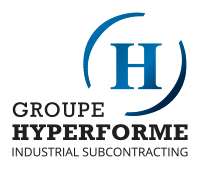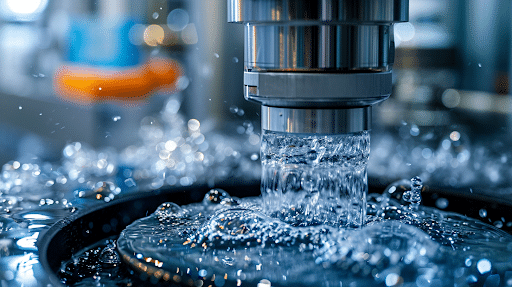What are the Advantages of E-Coating Compared to Other Coating Techniques?
In the realm of industrial coatings, achieving a high-quality finish that provides effective protection against corrosion and environmental conditions is crucial for the longevity and performance of metal components. One of the prominent coating techniques that have gained widespread adoption in various industries is E-Coating or electrodeposition coating.
This process involves the use of electrical currents to deposit a protective coating on metal surfaces, ensuring comprehensive coverage and exceptional durability. In this comprehensive exploration, we explain what E-Coating is, its applications, alternative coating materials, and the myriad advantages it offers compared to other coating techniques.
What is E-Coating?
E-Coating, or electrodeposition coating, is a method wherein an electrical current is utilized to deposit a protective coating onto metal surfaces. The E-coating process involves immersing the metal components in a bath containing the coating material, which is typically a water-based solution containing a combination of epoxy resins and other organic compounds. When an electrical charge is applied, a chemical reaction occurs, resulting in the formation of a uniform and adherent coating on the entire surface of the metal part.
Applications of E-Coating
The applications of E-Coating are diverse and extend across various industries. It is widely employed in the automotive industry for coating components like body panels, ensuring a durable and corrosion-resistant finish. Additionally, E-Coating is extensively used in heavy machinery industries, electronics, aerospace, appliance manufacturing, and other industrial sectors where protection against corrosion and environmental factors is paramount.
Alternative Coating Techniques
Exploring alternative coating techniques broadens the spectrum of surface finishing. From powder coating’s electrostatic application to electrophoretic methods, each approach offers an alternate look at coating solutions.
Powder Coating
- Involves applying dry powder to metal surfaces.
- Adheres through an electrostatic charge.
- Cured to create a durable finish.
Traditional Liquid Paints
- Involves applying a liquid solution directly onto the surface.
- Followed by drying or curing processes.
Autophoretic Coating
- A method where coatings are self-deposited on metal surfaces.
- Utilizes a chemical reaction for adhesion.
Solvent-Based Coatings
- Utilizes solvent-based solutions for coating application.
- Selection depends on specific application requirements.
10 Advantages of E-Coating Compared to Other Coating Techniques
1. Complete Coverage
E-Coating provides unparalleled coverage across complex shapes and hard-to-reach areas. The electrodeposition process ensures that the coating material uniformly covers the entire surface of the metal component, leaving no gaps or untreated areas. This level of comprehensive coverage is challenging to achieve with some alternative coating methods.
2. Consistent Thickness
Unlike traditional methods that may result in uneven coating thickness, E-Coating ensures a consistent and controlled layer of protection. The electrical current facilitates a uniform application of the coating material, leading to consistently high-quality industrial coatings. This uniformity is critical for applications where precise coating thickness is essential for performance and aesthetics.
3. Exceptional Wear Resistance
E-Coating exhibits outstanding wear resistance, making it particularly suitable for applications in industries such as heavy machinery, automotive, and aerospace. The coated surfaces demonstrate resilience against abrasion, impact, and scratches, ensuring the longevity of the finished product even in demanding conditions.
4. Corrosion Protection
The primary purpose of coatings is often to protect metal surfaces from corrosion. E-Coating excels in providing robust corrosion resistance, creating a durable barrier that shields metal components from environmental factors, moisture, and corrosive substances. This makes it an ideal choice for applications where corrosion protection is a critical requirement.
5. Environmentally Friendly
E-Coating stands out as an environmentally-friendly way of applying coatings. The water-based nature of the coating materials reduces the use of harmful solvents and minimizes the impact on the environment. Additionally, the automated and efficient nature of the process contributes to resource conservation and waste reduction.
6. Application Versatility
E-Coating is a versatile method suitable for a broad spectrum of applications. Its ability to coat complex geometries, irregular shapes, and intricate components makes it a preferred choice for industries with diverse coating requirements. Whether it’s agricultural equipment, automotive parts, or electrical components, E-Coating offers a reliable and adaptable solution.
7. Aesthetic Finishes and Color Options
Beyond its protective properties, E-Coating also provides aesthetic benefits. The process allows for a range of color options, contributing to the visual appeal of the finished product. The ability to achieve attractive finishes, including options like black finish, silver plating, and more, makes E-Coating a popular choice in industries where aesthetics matter.
8. Automated Nature and Reduced Human Error
E-Coating is an automated process that minimizes the potential for human error in the application. The consistent and controlled environment of the coating bath, combined with automated systems, ensures that each coated product meets the desired quality standards. This reliability is crucial for industries where precision and consistency are paramount.
9. UV Resistance and Gloss Retention
The cured E-Coating exhibits excellent UV resistance, maintaining its gloss and finish over extended periods. This attribute is particularly advantageous in applications where exposure to sunlight or outdoor conditions is prevalent. The ability to retain gloss contributes to the long-lasting visual appeal of coated products.
10. Wide Range of Industrial Applications
E-Coating finds applications in diverse industrial sectors, including but not limited to the automotive industry, heavy machinery industries, electronics, aerospace, and appliance manufacturing. Its adaptability and effectiveness make it a preferred choice for a wide array of products, from intricate electrical components to large agricultural equipment.
What are the advantages of industrial subcontracting?
Innovative E-Coating Solutions
At Groupe Hyperforme, we stand out as an industry leader in providing comprehensive industrial subcontracting services, catering to diverse manufacturing needs. Our expertise encompasses precision machining, metal fabrication, welding, and assembly, ensuring a seamless one-stop solution for clients.
With state-of-the-art facilities and a skilled workforce, we excel in delivering high-quality components and subassemblies. Our commitment to precision, efficiency, and innovation makes us a trusted partner for clients in various industries.
Our comprehensive services include:
- COMPOSITE AND PLASTICS
- ELECTROMECHANICS
- INDUSTRIAL PAINT APPLICATION
- METAL LASER CUTTING
- RUBBER
- WOOD TRANSFORMATION





